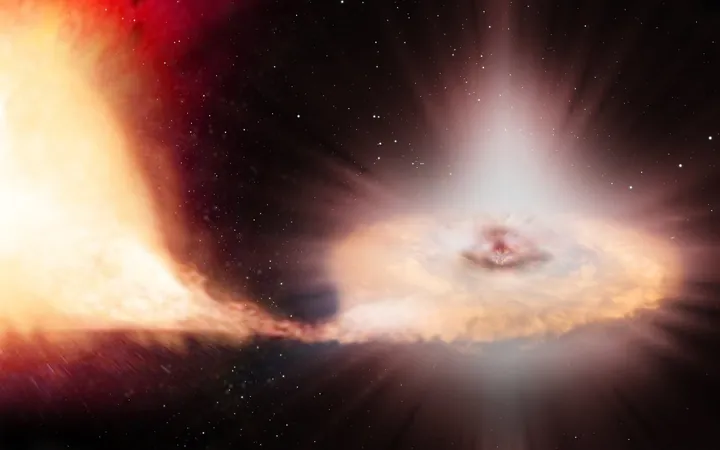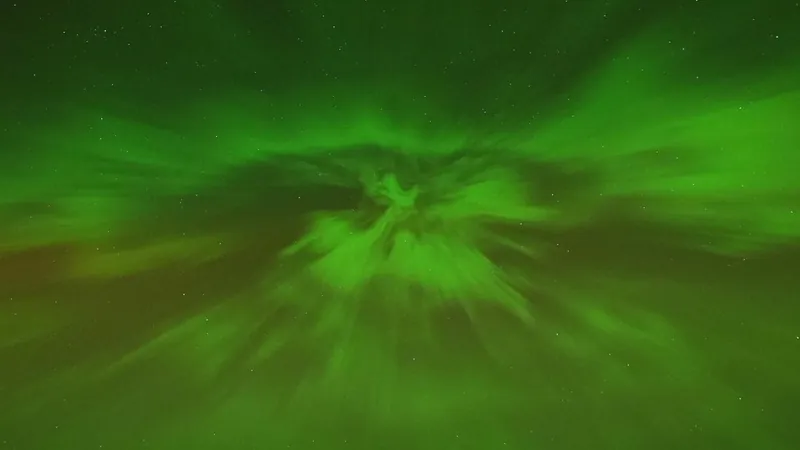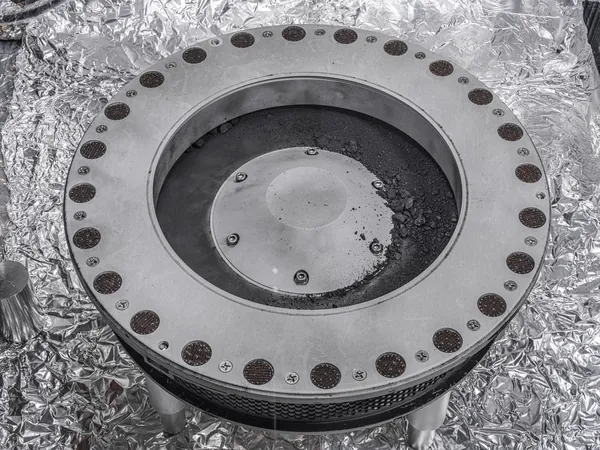
Supernovae Detection: A Game-Changer for Astronomy at Lightning Speed!
2025-08-25
Author: Amelia
Unleashing the Power of Supernovae
Supernovae—the explosive end of massive stars—are not only spectacular spectacles but are also vital cosmic tools that provide insights into the evolution of the Universe. When a star reaches the end of its life, it undergoes a catastrophic gravitational collapse, resulting in an explosion that can outshine an entire galaxy. These brilliant explosions serve as reliable "standard candles" for measuring cosmic distances and the ongoing expansion of the Universe.
The Quest to Spot Supernovae Quickly
Detecting these brilliant events has historically posed significant challenges due to their fleeting nature. However, thanks to innovative high-cadence sky surveys, astronomers are making remarkable strides in spotting supernovae faster than ever before. A groundbreaking study spearheaded by researchers at the Institute of Space Sciences (ICE-CSIC) in Barcelona has introduced a new methodology for obtaining spectra from these cosmic events with remarkable speed.
A Collaborative Effort to Innovate
Led by Lluís Galbany from ICE-CSIC, this collaborative study brings together expertise from institutions like the European Southern Observatory (ESO), the Institut de Física d'Altes Energies (IFAE), and several esteemed universities globally. Their research, published in the Journal of Cosmology and Astroparticle Physics, outlines protocols for swiftly capturing the essential spectra of supernovae during their initial explosion phases.
The Importance of Early Detection
Capturing a supernova in its infancy—within hours or days of detonation—is crucial for scientists. Early detection provides invaluable clues about the progenitor star system and allows astronomers to understand the explosion mechanism better. Traditionally, supernovae have been detected much later, hindering detailed investigations.
Understanding the Two Categories of Supernovae
Supernovae generally fall into two categories: thermonuclear (Type Ia) and core-collapse types. Thermonuclear supernovae occur in binary systems with white dwarfs siphoning material from a companion star, leading to a catastrophic explosion. In contrast, core-collapse supernovae take place in massive stars that, after exhausting their nuclear fuel, collapse under their gravity and trigger an explosive release of energy.
Harnessing Advanced Technology for Spectra Collection
The innovative methodology developed by Galbany and his team utilizes the Optical System for Imaging and low-Intermediate-Resolution Integrated Spectroscopy (OSIRIS) on the Gran Telescopio de Canarias (GTC) in Spain. The detection process involves a rapid search for potential supernova candidates based on their absence in previous images, ensuring swift follow-up observations. Galbany explains how analyzing the supernova’s spectrum reveals critical information, such as the presence of hydrogen, indicating a core-collapse event.
A Landmark Achievement in Supernova Detection
The team successfully tested their protocol and detected ten supernovae within six days, including two within the first 48 hours after their explosion. This achievement sets the stage for even quicker detections in future studies. Galbany remarked, "What we have just published is a pilot study. We now know that a rapid-response spectroscopic program, well-coordinated with deep photometric surveys, can realistically capture spectra within a day of the explosion." This approach is paving the way for groundbreaking studies during upcoming large-scale surveys like the La Silla Southern Supernova Survey and the Legacy Survey of Space and Time.
The Future of Cosmic Discovery
With this swift detection technique, astronomers are on the brink of a new era where the very early phases of supernova explosions can be systematically studied. This has profound implications for our understanding of stellar evolution and cosmic dynamics, propelling astronomical research into exciting new territory.









 Brasil (PT)
Brasil (PT)
 Canada (EN)
Canada (EN)
 Chile (ES)
Chile (ES)
 Česko (CS)
Česko (CS)
 대한민국 (KO)
대한민국 (KO)
 España (ES)
España (ES)
 France (FR)
France (FR)
 Hong Kong (EN)
Hong Kong (EN)
 Italia (IT)
Italia (IT)
 日本 (JA)
日本 (JA)
 Magyarország (HU)
Magyarország (HU)
 Norge (NO)
Norge (NO)
 Polska (PL)
Polska (PL)
 Schweiz (DE)
Schweiz (DE)
 Singapore (EN)
Singapore (EN)
 Sverige (SV)
Sverige (SV)
 Suomi (FI)
Suomi (FI)
 Türkiye (TR)
Türkiye (TR)
 الإمارات العربية المتحدة (AR)
الإمارات العربية المتحدة (AR)